In-Cylinder Pressure Estimation from Rotational Speed Measurements via Extended Kalman Filter
Abstract
1. Introduction
2. In-Cylinder Pressure Model
2.1. Engine Speed Dynamics
2.2. Pressure Parameterization
3. Extended Kalman Filter for In-Cylinder Pressure Estimation
4. Experimental Results
4.1. Validation of the Pressure Parameterization
4.2. EKF Pressure Estimation
5. Conclusions
Author Contributions
Funding
Informed Consent Statement
Data Availability Statement
Conflicts of Interest
References
- Heywood, J.B. Internal Combustion Engine Fundamentals; McGraw-Hill Education: New York, NY, USA, 2018. [Google Scholar]
- Pestana, G.W. Engine Control Methods Using Combustion Pressure Feedback; SAE Technical Paper, Number 890758; SAE International: Warrendale, PA, USA, 1989. [Google Scholar]
- Müller, R.; Hart, M.; Truscott, A.; Noble, A.; Kroetz, G.; Richter, C.; Cavalloni, C. Combustion pressure-based engine management system. In Proceedings of the International Conference on Vehicle Systems Integration, Brighton, UK, 21–23 June 2000; pp. 89–101. [Google Scholar]
- Bares, P.; Selmanaj, D.; Guardiola, C.; Onder, C. A new knock event definition for knock detection and control optimization. Appl. Therm. Eng. 2018, 131, 80–88. [Google Scholar] [CrossRef]
- Napolitano, P.; Jimenez, I.; Pla, B.; Beatrice, C. Knock recognition based on vibration signal and Wiebe function in a heavy-duty spark ignited engine fueled with Methane. Fuel 2022, 315, 122957. [Google Scholar] [CrossRef]
- Ramond, A.; Last, B.; Goretti, S.; Burrows, J. Cylinder pressure sensor for close loop combustion control of diesel engines. In Proceedings of the 2nd Emission Control, Dresden, Germany, 17–18 June 2004; pp. 248–261. [Google Scholar]
- Giglio, V.; Iorio, B.; Police, G.; Rispoli, N. In-Cylinder Pressure Measurement for Control and Diagnostics in Spark Ignition Engines, Proceedings of the 7th International Conference on Engines for Automobile, Naples, Italy, 11–16 September 2005; SAE Technical Paper; Number 2005-24-062; SAE International: Warrendale, PA, USA, 2005. [Google Scholar]
- Li, Y.; Wang, Y.; Zi, Y.; Zhang, M. An enhanced data visualization method for diesel engine malfunction classification using multi-sensor signals. Sensors 2015, 15, 26675–26693. [Google Scholar] [CrossRef]
- Skrzek, T.; Rucki, M.; Górski, K.; Matijošius, J.; Barta, D.; Caban, J.; Zarajczyk, J. Repeatability of high-pressure measurement in a diesel engine test bed. Sensors 2020, 20, 3478. [Google Scholar] [CrossRef]
- Du, H.; Zhang, L.; Shi, X. Reconstructing cylinder pressure from vibration signals based on radial basis function networks. Proc. Inst. Mech. Eng. Part D J. Automob. Eng. 2001, 215, 761–767. [Google Scholar] [CrossRef]
- El-Ghamry, M.; Steel, J.A.; Reuben, R.L.; Fog, T. Indirect measurement of cylinder pressure from diesel engines using acoustic emission. Mech. Syst. Signal Process. 2005, 19, 751–765. [Google Scholar] [CrossRef]
- Romani, L.; Bianchini, A.; Vichi, G.; Bellissima, A.; Ferrara, G. Experimental assessment of a methodology for the indirect in-cylinder pressure evaluation in four-stroke internal combustion engines. Energies 2018, 11, 1982. [Google Scholar] [CrossRef]
- Rizzoni, G. Estimate of indicated torque from crankshaft speed fluctuations: A model for the dynamics of the IC engine. IEEE Trans. Veh. Technol. 1989, 38, 168–179. [Google Scholar] [CrossRef]
- Connolly, F.T.; Rizzoni, G. Real time estimation of engine torque for the detection of engine misfires. J. Dyn. Syst. Meas. Control 1994, 116, 675–686. [Google Scholar] [CrossRef]
- Moro, D.; Cavina, N.; Ponti, F. In-cylinder pressure reconstruction based on instantaneous engine speed signal. J. Eng. Gas Turbines Power 2002, 124, 220–225. [Google Scholar] [CrossRef]
- Hamedović, H.; Raichle, F.; Bohme, J.F. In-cylinder pressure reconstruction for multicylinder SI-engine by combined processing of engine speed and one cylinder pressure. In Proceedings of the IEEE International Conference on Acoustics, Speech, and Signal Processing, Philadelphia, PA, USA, 23–23 March 2005; Volume 5, p. v-677. [Google Scholar] [CrossRef]
- Hamedović, H.; Raichle, F.; Breuninger, J.; Fischer, W.; Fishcer, W.; Dieterle, W.; Klenk, M.; Böhme, J.F. IMEP-Estimation and In-Cylinder Pressure Reconstruction for Multicylinder SI-Engine by Combined Processing of Engine Speed and One Cylinder Pressure; SAE Transactions; SAE International: Warrendale, PA, USA, 2005; pp. 135–142. [Google Scholar]
- Shiao, Y.; Moskwa, J.J. Cylinder pressure and combustion heat release estimation for SI engine diagnostics using nonlinear sliding observers. IEEE Trans. Control Syst. Technol. 1995, 3, 70–78. [Google Scholar] [CrossRef]
- Haskara, I.; Mianzo, L. Real-time cylinder pressure and indicated torque estimation via second order sliding modes. In Proceedings of the 2001 American Control Conference (Cat. No. 01CH37148), Arlington, VA, USA, 25–27 June 2001; Volume 5, pp. 3324–3328. [Google Scholar] [CrossRef]
- Potenza, R.; Dunne, J.; Vulli, S.; Richardson, D.; King, P. Multicylinder engine pressure reconstruction using NARX neural networks and crank kinematics. Int. J. Engine Res. 2007, 8, 499–518. [Google Scholar] [CrossRef]
- Saraswati, S.; Chand, S. Reconstruction of cylinder pressure for SI engine using recurrent neural network. Neural Comput. Appl. 2010, 19, 935–944. [Google Scholar] [CrossRef]
- Bennett, C.; Dunne, J.; Trimby, S.; Richardson, D. Engine cylinder pressure reconstruction using crank kinematics and recurrently-trained neural networks. Mech. Syst. Signal Process. 2017, 85, 126–145. [Google Scholar] [CrossRef]
- Dunne, J.F.; Bennett, C. A crank-kinematics-based engine cylinder pressure reconstruction model. Int. J. Engine Res. 2020, 21, 1147–1161. [Google Scholar] [CrossRef]
- Catalani, I.; Bosi, L.; Baroni, A.; Romani, L.; Vichi, G.; Bellissima, A.; Asai, G.; Minamino, R.; Ferrara, G. In-Cylinder Pressure Estimation in a Multi-Cylinder Engine by Combining the Instantaneous Crankshaft Speed Data and a 0D Thermodynamic Model. Numerical Validation. J. Phys. Conf. Ser. 2022, 2385, 012069. [Google Scholar] [CrossRef]
- Henn, M.; Kiencke, U. Estimation of In-Cylinder-Pressure Torque from Angular Speed by Kalman Filtering. In Advances in Automotive Control 1995; Elsevier: Amsterdam, The Netherlands, 1995; pp. 21–26. [Google Scholar] [CrossRef]
- Chauvin, J.; Corde, G.; Moulin, P.; Castagné, M.; Petit, N.; Rouchon, P. Real-time combustion torque estimation on a diesel engine test bench using time-varying Kalman filtering. In Proceedings of the 2004 43rd IEEE Conference on Decision and Control (CDC), Nassau, Bahamas, 14–17 December 2004; Volume 2, pp. 1688–1694. [Google Scholar] [CrossRef]
- Weißenborn, E.; Bossmeyer, T.; Bertram, T. Adaptation of a zero-dimensional cylinder pressure model for diesel engines using the crankshaft rotational speed. Mech. Syst. Signal Process. 2011, 25, 1887–1910. [Google Scholar] [CrossRef]
- Kallenberger, C.; Hamedović, H.; Zoubir, A.M. Comparison of the Extended Kalman Filter and the unscented Kalman filter for parameter estimation in combustion engines. In Proceedings of the 2007 15th European Signal Processing Conference, Poznan, Poland, 3–7 September 2007; pp. 2424–2428. [Google Scholar]
- Al-Durra, A.; Canova, M.; Yurkovich, S. A model-based methodology for real-time estimation of diesel engine cylinder pressure. J. Dyn. Syst. Meas. Control 2011, 133, 031005. [Google Scholar] [CrossRef]
- Han, R.; Bohn, C.; Bauer, G. Recursive engine in-cylinder pressure estimation using Kalman filter and structural vibration signal. IFAC-PapersOnLine 2018, 51, 700–705. [Google Scholar] [CrossRef]
- Fiorini, N.; Romani, L.; Bellissima, A.; Vichi, G.; Bianchini, A.; Ferrara, G. An indirect in-cylinder pressure measurement technique based on the estimation of the mechanical strength acting on an engine head screw: Development and assessment. Energy Procedia 2018, 148, 695–702. [Google Scholar] [CrossRef]
- Ball, J.K.; Bowe, M.J.; Stone, C.R.; McFadden, P.D. Torque Estimation and Misfire Detection Using Block Angular Acceleration; SAE Transactions; SAE International: Warrendale, PA, USA, 2000; pp. 622–643. [Google Scholar]
- Ponti, F.; Solieri, L. Analysis of the interactions between indicated and reciprocating torques for the development of a torsional behavior model of the powertrain. In Proceedings of the Internal Combustion Engine Division Fall Technical Conference, Charleston, SC, USA, 14–17 October 2007; Volume 48116, pp. 579–589. [Google Scholar]
- Ponti, F.; Ravaglioli, V.; Serra, G.; Stola, F. Instantaneous engine speed measurement and processing for MFB50 evaluation. SAE Int. J. Engines 2010, 2, 235–244. [Google Scholar] [CrossRef]
- Anderson, B.D.; Moore, J.B. Optimal Filtering; Prentice-Hall: Hoboken, NJ, USA, 1979. [Google Scholar]
- Bosi, L.; Catalani, I.; Baroni, A.; Romani, L.; Vichi, G.; Bellissima, A.; Asai, G.; Minamino, R.; Ferrara, G. Real Time Estimation of Combustion Indicators on a 4-Cylinder CI Turbocharged Engine Based on Instantaneous Engine Speed Measurement with Rapid Prototyping Implementation. J. Phys. Conf. Ser. 2022, 2385, 012083. [Google Scholar] [CrossRef]
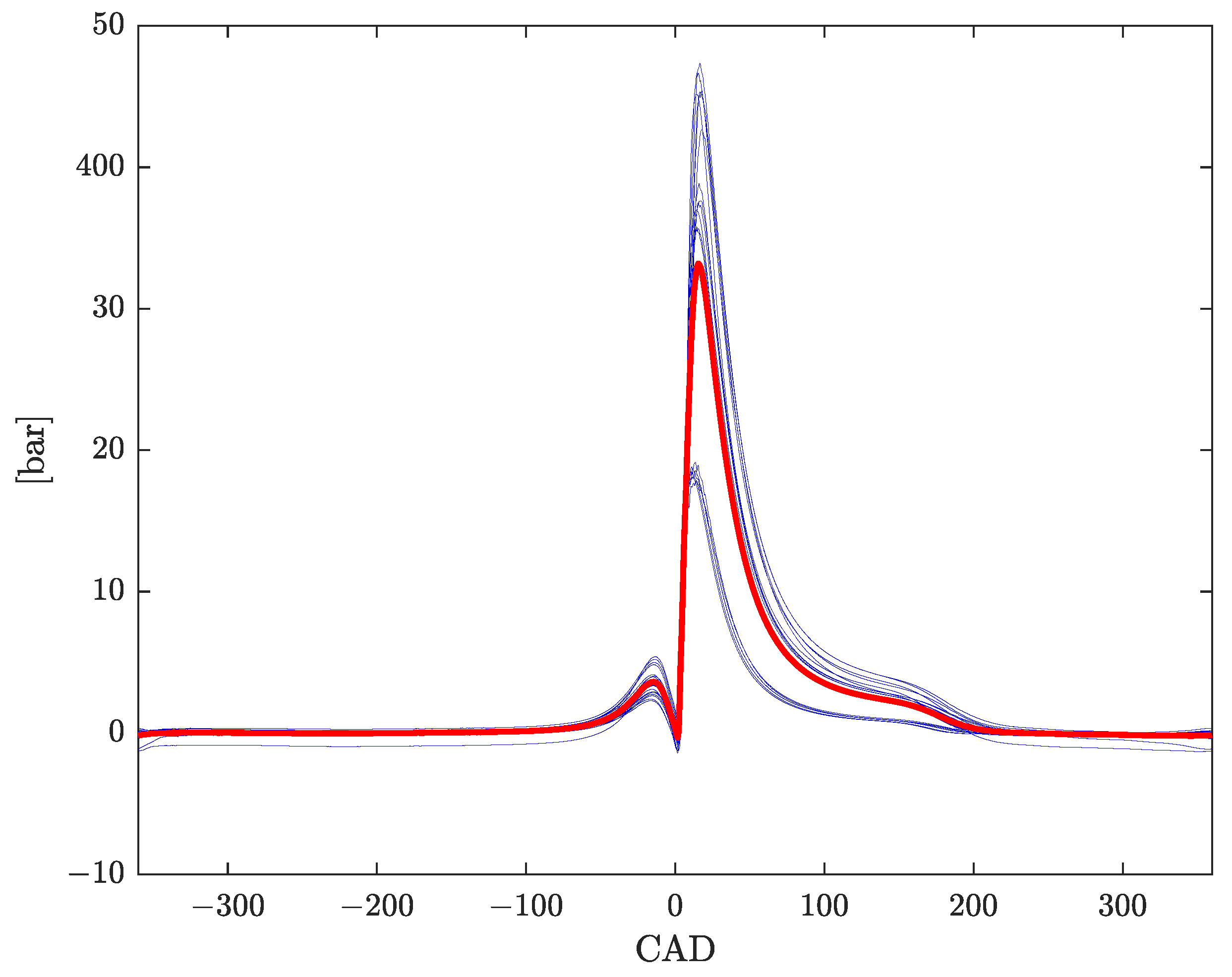
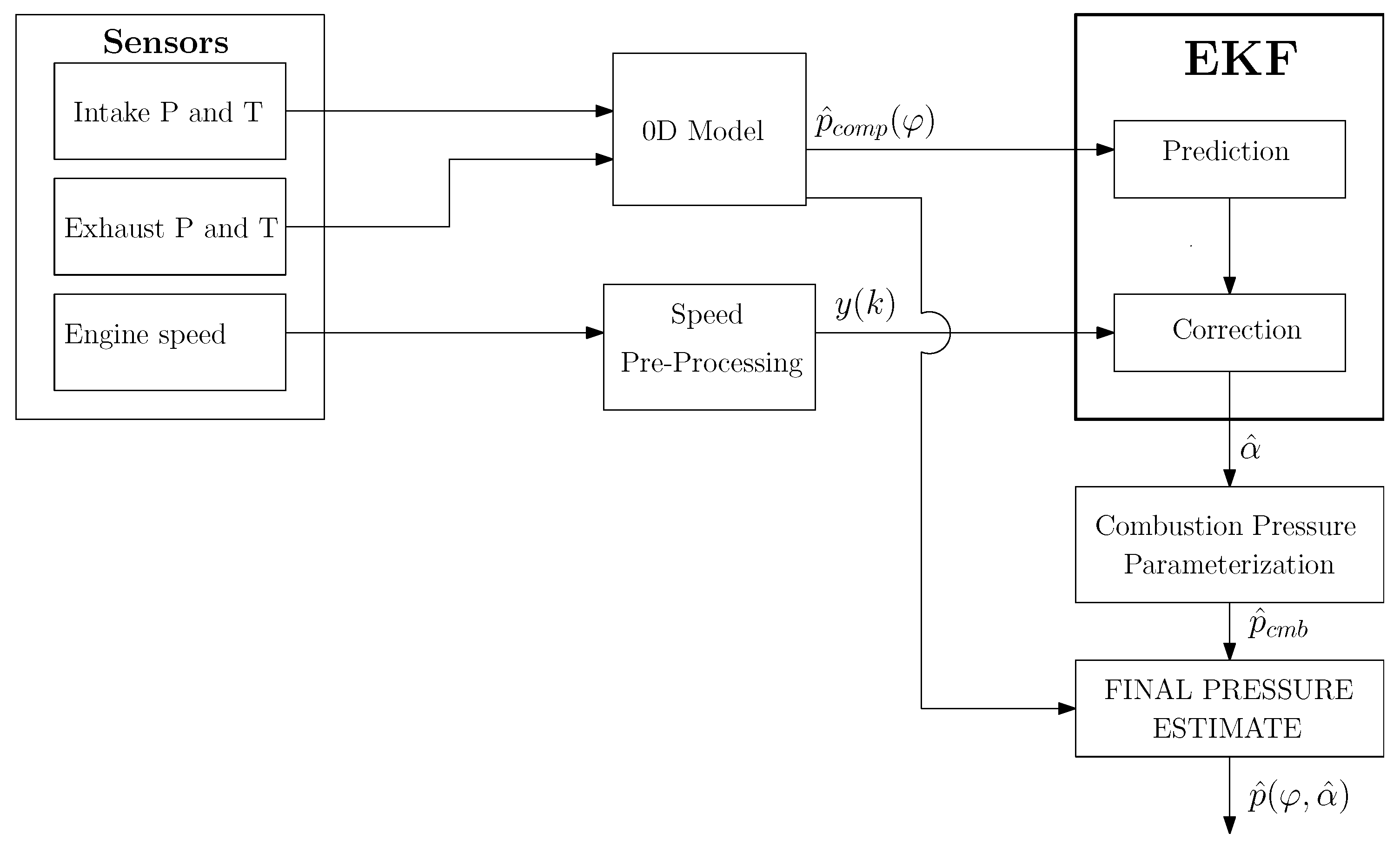
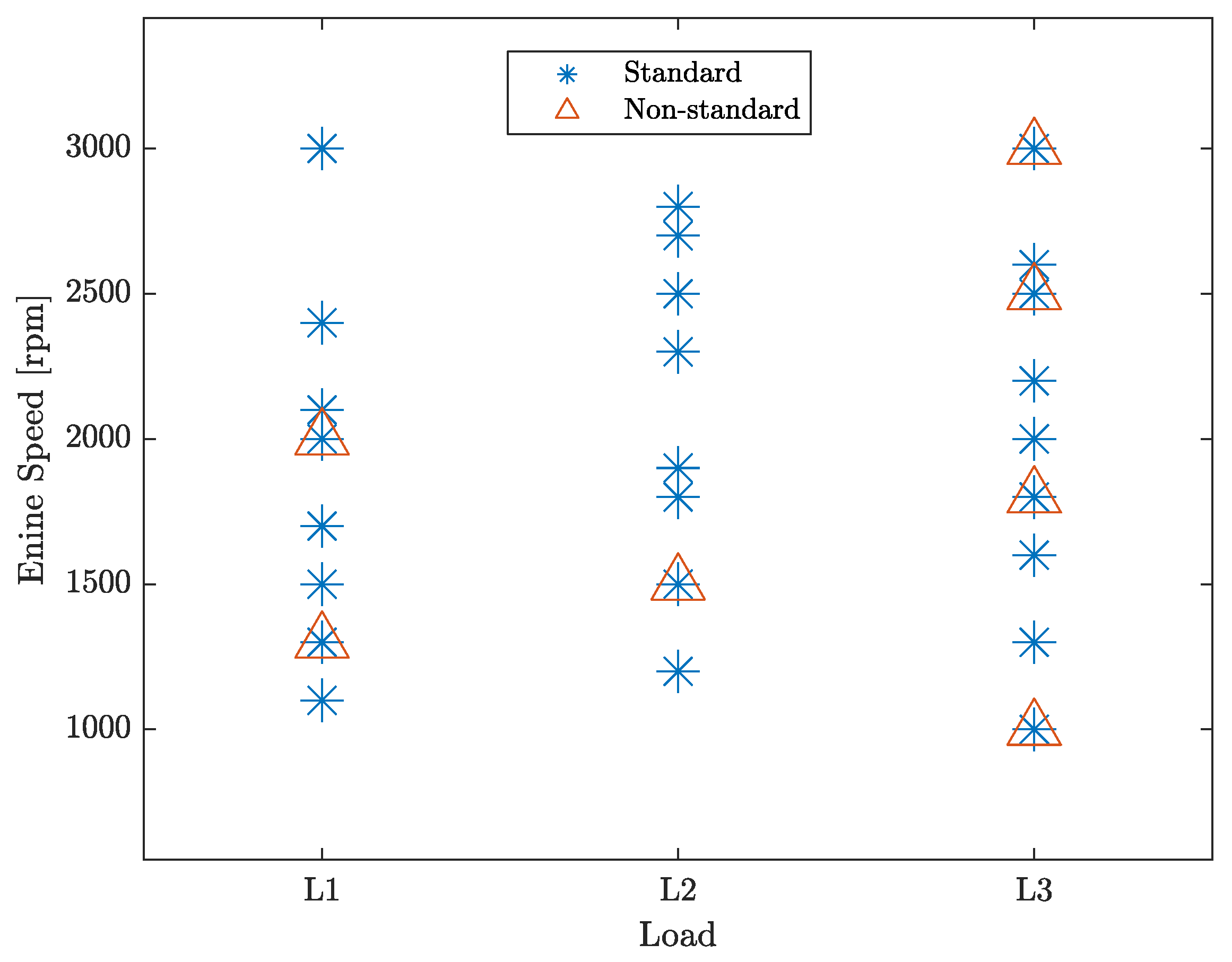
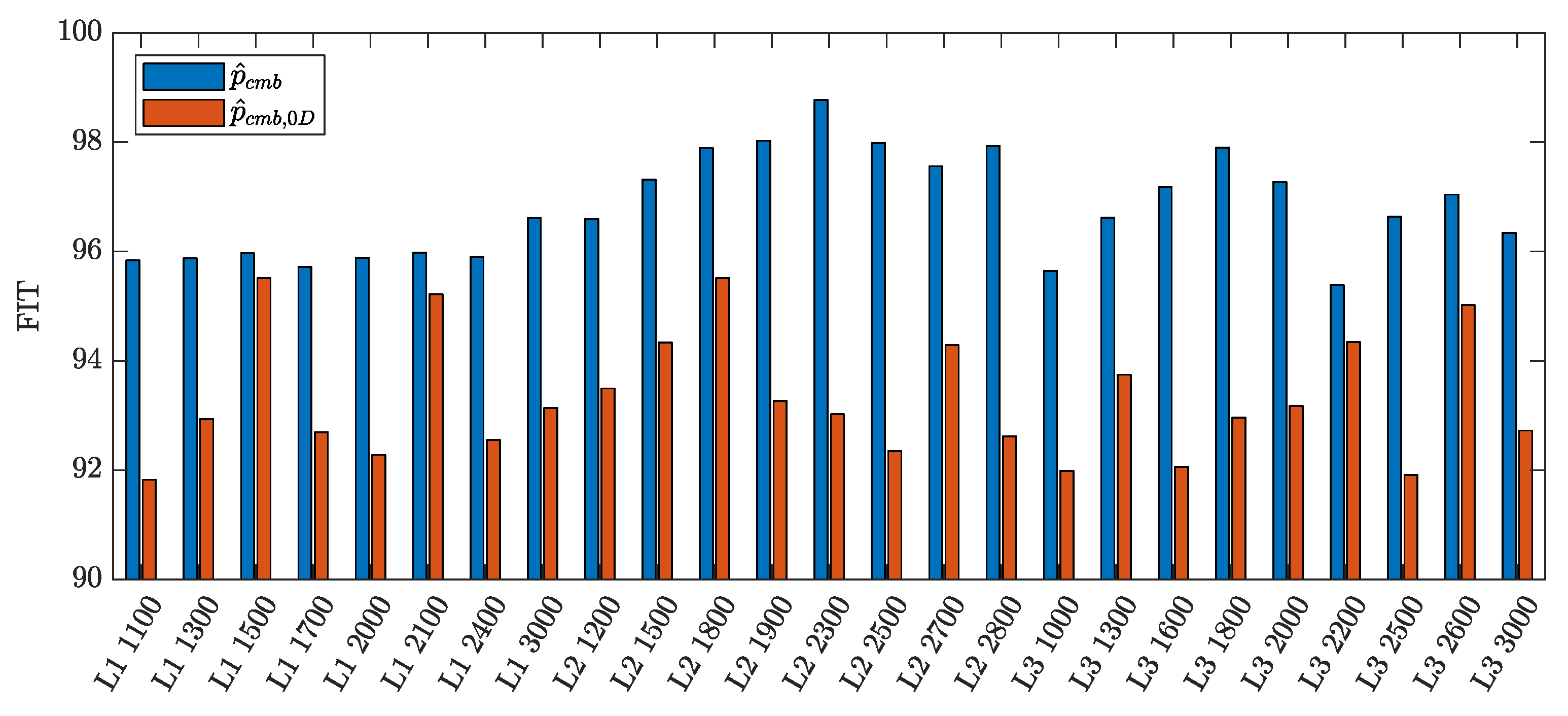


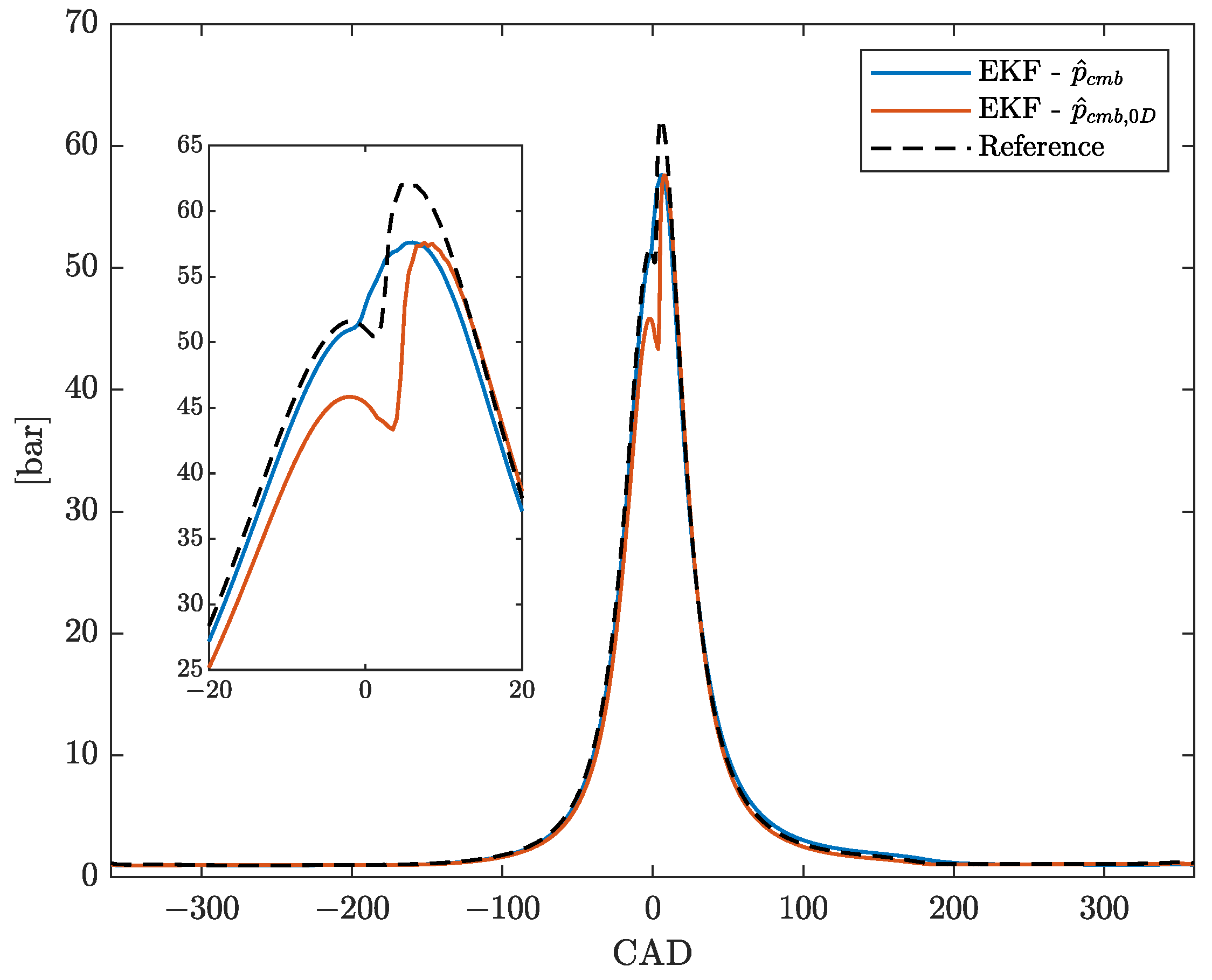
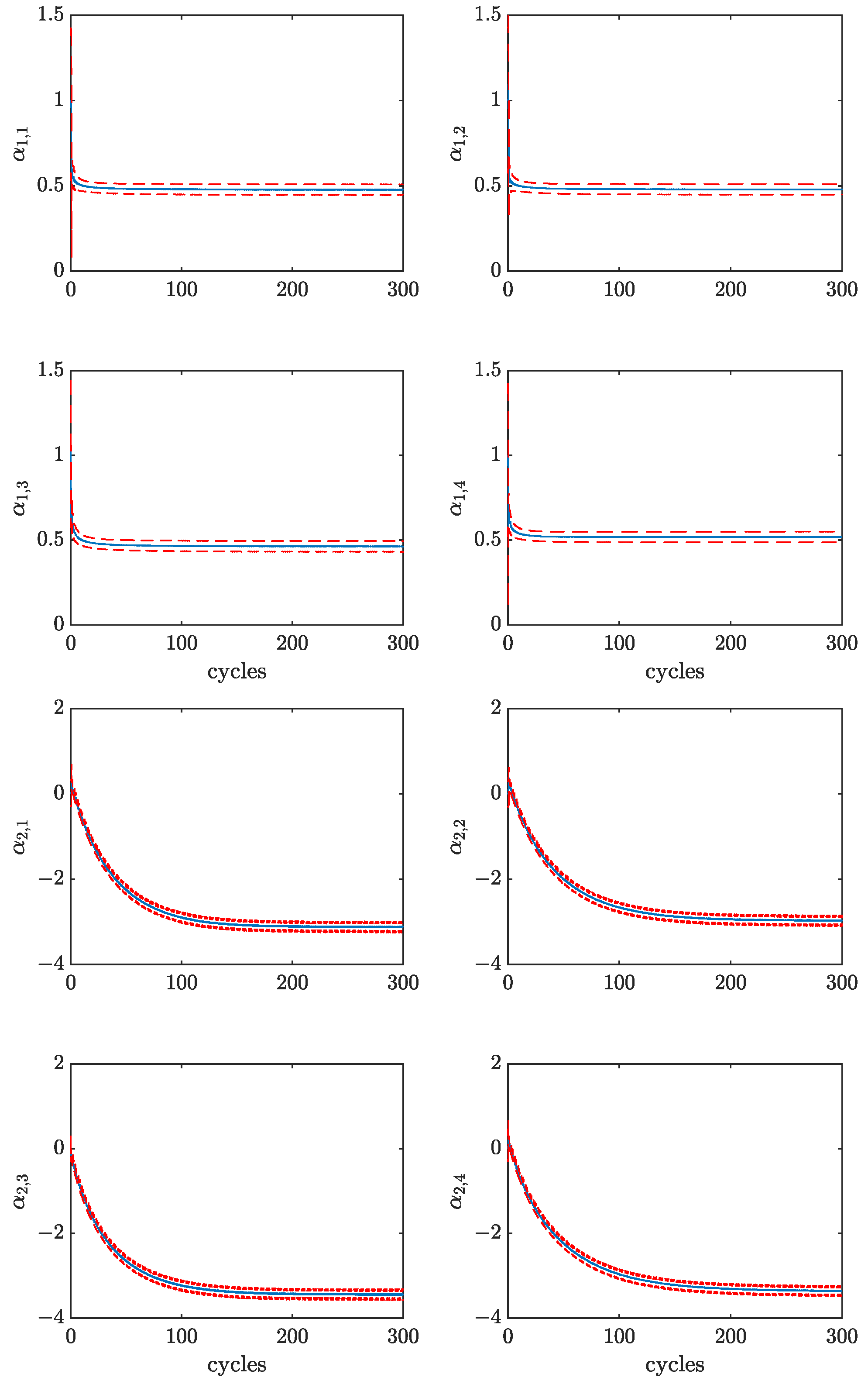
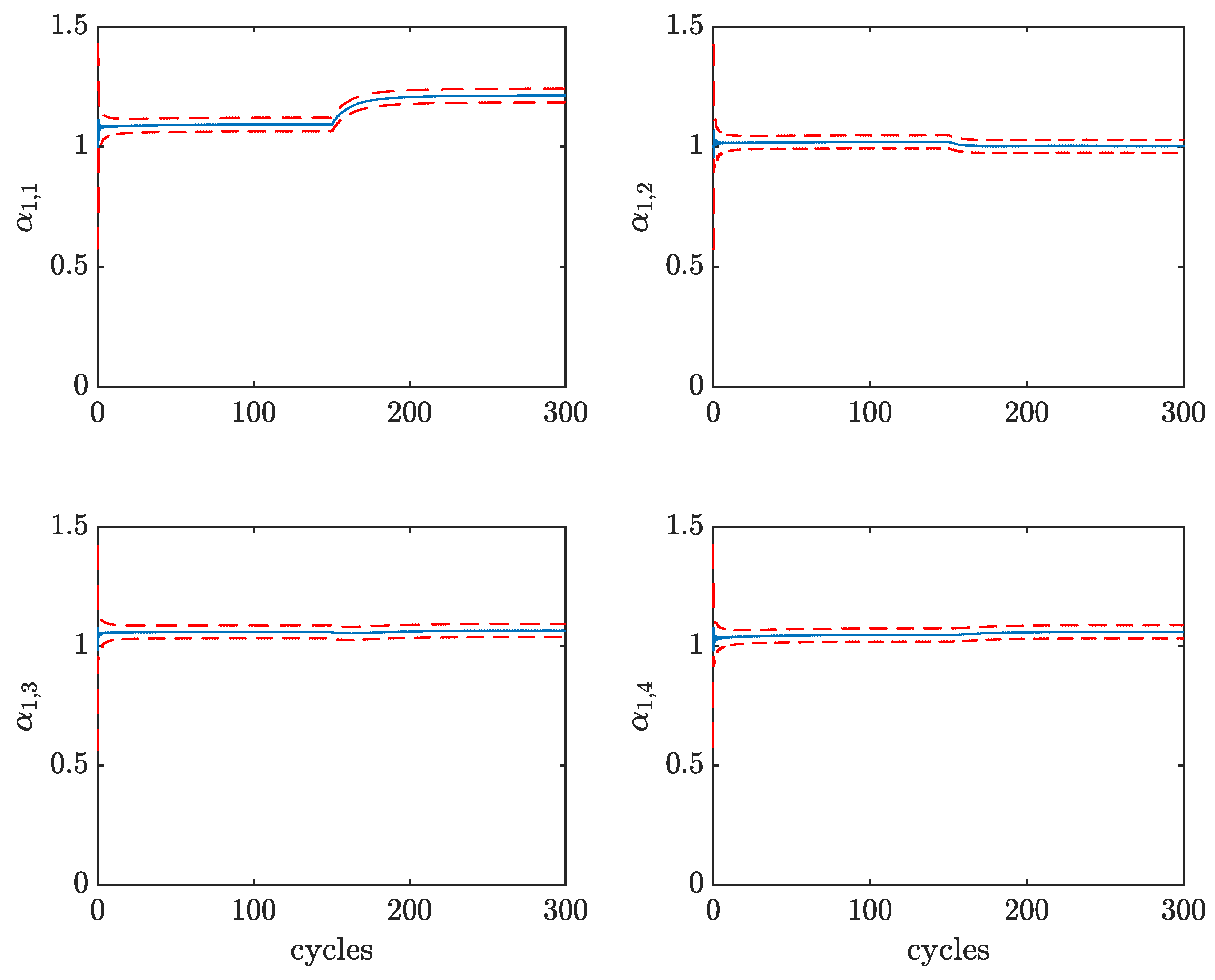
| IMEP Error (%) | ||
|---|---|---|
| Average | 14.8 | 18.4 |
| Standard Deviation | 15.7 | 21.0 |
Disclaimer/Publisher’s Note: The statements, opinions and data contained in all publications are solely those of the individual author(s) and contributor(s) and not of MDPI and/or the editor(s). MDPI and/or the editor(s) disclaim responsibility for any injury to people or property resulting from any ideas, methods, instructions or products referred to in the content. |
© 2023 by the authors. Licensee MDPI, Basel, Switzerland. This article is an open access article distributed under the terms and conditions of the Creative Commons Attribution (CC BY) license (https://creativecommons.org/licenses/by/4.0/).
Share and Cite
Quartullo, R.; Garulli, A.; Giannitrapani, A.; Minamino, R.; Vichi, G. In-Cylinder Pressure Estimation from Rotational Speed Measurements via Extended Kalman Filter. Sensors 2023, 23, 4326. https://doi.org/10.3390/s23094326
Quartullo R, Garulli A, Giannitrapani A, Minamino R, Vichi G. In-Cylinder Pressure Estimation from Rotational Speed Measurements via Extended Kalman Filter. Sensors. 2023; 23(9):4326. https://doi.org/10.3390/s23094326
Chicago/Turabian StyleQuartullo, Renato, Andrea Garulli, Antonio Giannitrapani, Ryota Minamino, and Giovanni Vichi. 2023. "In-Cylinder Pressure Estimation from Rotational Speed Measurements via Extended Kalman Filter" Sensors 23, no. 9: 4326. https://doi.org/10.3390/s23094326
APA StyleQuartullo, R., Garulli, A., Giannitrapani, A., Minamino, R., & Vichi, G. (2023). In-Cylinder Pressure Estimation from Rotational Speed Measurements via Extended Kalman Filter. Sensors, 23(9), 4326. https://doi.org/10.3390/s23094326






